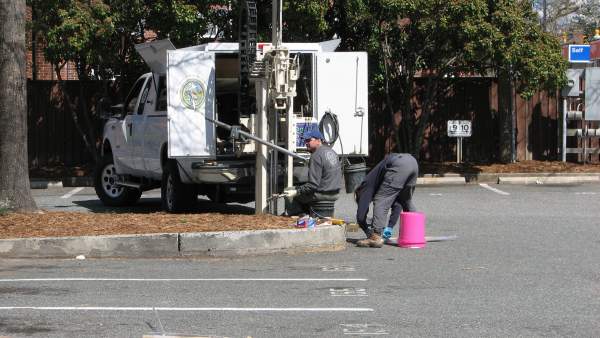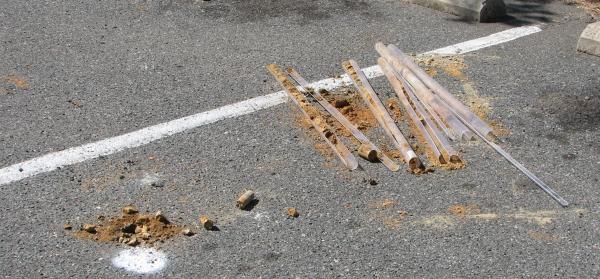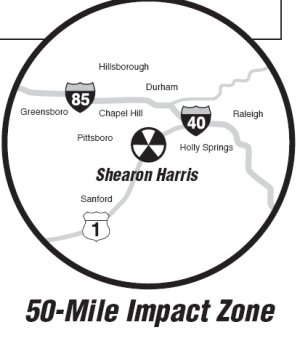[UPDATE] As of April 3rd, the Town has provided part of what I asked for in the following petition, the environmental report [PDF]. In the Town’s announcement of a conclusion to negotiations, the figure of $232,000 for a remediation was thrown out. This figure, of which I haven’t found a full justification, would supposedly include removal of 13,000 tons of material to either a hazardous waste landfill or some other remediation facility.
More to come.
[ORIGINAL POST]
A quick follow up on my previous post Lot #5 Development: “…up through the ground come a bubbling crude…â€.
I’ve sent Chapel Hill’s Town Council a petition (Mar. 29th) asking for a postponement of any further approvals for Special Use Permits, extending or adding new consultancies, preparing the lot for construction, etc. until the financial liabilities attendant to environmental remediation are fully and timely disclosed.
Further, to avoid the recent mess involving the Rogers Road community, siting a trash transfer station on Eubanks and the Orange County Board of Commissioner’s apparent lack of any discernible specific, detailed and publicly revealed process for making their analysis and decision, that the methodology, data and assumptions are published by Council fully seven (7) business days prior to any approval.
A call from the Daily Tar Heel spurred me to take this action. I was hoping the environmental report, which, from my experience, should’ve taken a short time to prepare, would be published for public review by now. According to the DTH’s reporter, it hasn’t.
My concern is that the “clock” would be “run out” on the hazardous waste remediation issue – that Council would move ahead amassing further public (taxpayer) obligations without adequate background.
To help encourage a full, timely, open and responsible discussion of the hazardous waste issue, I’ve submitted the following petition:
Mayor and Town Council,
I’m petitioning Council to postpone ANY further approvals for the Lot #5 Downtown Development Initiative:
1) until the environmental assay of Lot #5 is 100% completed. This would include any recommended
follow up tests, such as monitoring wells, further core sampling, ground-radar location of
tanks or other structures, etc.2) until the results of the environmental assay have been independently reviewed.
3) until the results, the independent review, the methodology, data, assumptions, geologic maps
and any other factors used to derive the results have been published 7 days prior to the
approval meeting.4) until an initial estimate and plan for the environmental remediation, if necessary, has been
developed.5) until the estimate, the methodology, data and assumptions going into that cost estimate have
been published 7 business days prior to the approval meeting.6) until a financial impact statement, including additional costs, borrowings and wider effects
on the Town’s financial well-being has been developed.7) until the estimated financial impact and methodology, data and assumptions going into that
evaluation have been published 7 business days prior to the approval meeting.It also appears that the underlying geology of Lot #5 might be rockier than expected. If this is so,
Council should also postpone further approvals pending an evaluation of increased costs to the
developer and taxpayers of Chapel Hill.Considering that an expensive environmental remediation might significantly and adversely impact our
Town’s finances, and, in combination with Lot #5’s current taxpayer obligations, possibly necessitate
either a substantial tax increase or reduction in services or both, the fiscally prudent course of
action is to wait until the facts are reported and the conclusions reviewed by the wider public.Finally, I would like to highlight the importance of giving the public at least 7 business days of
notice. Our citizens are already concerned about the trajectory this project has so far taken.
Some of the greatest concern has come from financial, urban planning, environmental, energy and
commercial real-estate experts.Let’s give our talented citizenry the opportunity for a careful, measured evaluation of the
Town’s reports and extend the courtesy of providing a reasonable amount of time to draft a
response.Rushing the project forward without disclosing further anticipated financial obligations does
our citizenry a disservice.Thank you,
Will Raymond
I’ll post the response as it comes in.















